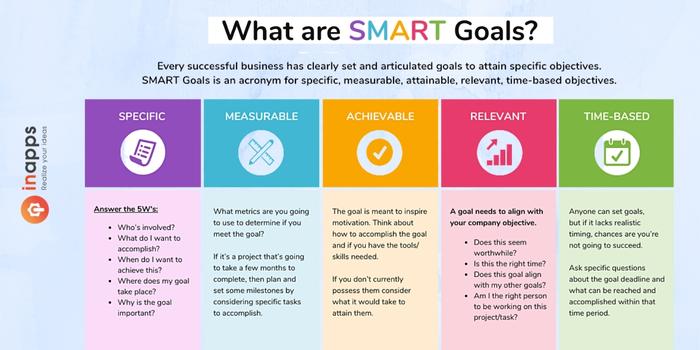- Home
- >
- Inbound Marketing
- >
- What is a Marketing Audit? How to do it right?
Are you putting thousands of dollars into your marketing but not seeing any results? Instead of continuing to pour money into an unsuccessful strategy, conduct a marketing audit to determine what you are doing wrong.
In this blog I will discuss:
- What is a marketing audit?
- Components of a successful marketing audit.
- How to conduct a marketing audit?
Let’s start with the basics.
What is a Marketing Audit?
Conducting an audit is the best way to identify problems and recognize opportunities within your marketing strategy. It is not enough to set your strategy and forget about it.
Buying trends are always changing and so should your marketing. While you don’t need to be conducting an audit every day, you’d want to do one at least once a year. This way, you are not wasting your budget on tactics that aren’t helping you reach your business’s goals.
You can do a general marketing audit or break it down to focus on some specifics, such as a digital marketing audit, image audit, content audit, or SEO audit.
There are many benefits that come along with conducting a marketing audit: it can allow you to identify obstacles, it can help you benchmark your performance, and it can help you generate a real strategy.

While there are hundreds of other benefits of conducting a marketing audit, the main point of the audit is to take a step back and look at your entire marketing operation to help you make data-driven decisions.
So, what determines a successful marketing audit?
Components of a successful Marketing Audit
While your marketing audit may vary depending on your goals, there are still fundamental components that every audit should follow.
Here are 4 components to keep in mind:
- Comprehensive – Your audit should cover every aspect of your marketing, you shouldn’t only focus on proving your assumptions.
- Systematic – You need to have planned steps to follow that take into account your environment, strategy, and objective.
- Independent – You want your audit to be unbiased, and the best way to do so is to have your audit performed by an external party.
- Recurring – Don’t wait until it is too late. Conduct a marketing audit regularly to stay ahead of any problems that may occur.
While these components seem simple, it’s quite difficult to execute in practice. Many businesses often get overwhelmed with the process and begin to cut corners.
How to Conduct a Marketing Audit
In order to plan for your future, you have to look at your past. When conducting an audit, you want to compile your past work to identify patterns.
Here are 6 steps to help you conduct a successful marketing audit:
1. Define Marketing Goals
Setting a goal is like putting a light at the end of your path. It guides you along the way, making sure you are headed in the right direction.
The problem many marketers face is that they set goals that aren’t actionable. This might be because they are too general or not thought out enough.
When creating your goals you want them to be SMART.

- Specific – You want to make your goals as clear and specific as possible.
- Measurable– You need a way to track and measure the success of your goals. Determining a KPI is a great way to make sure you know what you are aiming for.
- Achievable – While bigger is usually better, that is not always the case when it comes to setting goals. You want your goals to be realistic. Otherwise, you will not be able to achieve them, and it can leave you feeling unmotivated.
- Relevant – You want your goals to be beneficial to your business.
- Time-based – Setting a deadline makes it easier to stay motivated and also helps you to prioritize tasks.
Example:
- Not a SMART goal: “I want more customers.”
- SMART goal: “By the end of the second quarter, I want to have 20% more visitors on our website.”
See how much easier it will be to achieve the SMART goal? You should set up long-term and short-term goals that you want to reach in the next few weeks, months, and next few years. Once you have your goals in mind, you can continue on with a clearer path.
2. Compile Assets
Create a spreadsheet containing all of the marketing assets that you want to audit. This can include any site maps, social media posts, blog content, paid advertisements, email newsletters, and any other asset you may create.
One of the reasons we recommend conducting an audit every year or 6 months is so that you do not get overwhelmed with too many assets. Instead, you can focus on anything you have created since your last audit.
When compiling your assets, add any data that you may find helpful. This includes your URLs, KPIs, keywords, content type, and metadata. This way, you have everything you need all in one location when it comes time to analyze.
3. Determine Your Audience
A great marketing strategy means nothing if it isn’t targeting the right audience. It is important to get to know your audience and establish what content resonates with them.
One great way to understand your audience is by creating customer personas. This will help you understand your ideal customer and will include things like interests, pain points, demographics, and behaviors.

While you want to have in-depth knowledge of your current customers, you also want to think about who your target might also be. You can look at different segments you are not currently targeting that could potentially find value in your offerings.
4. Identify Competition
People always say not to compare yourself to others, but as a business, you have to — because that is exactly what your customers are doing. Pick 3-6 competitors that are in your industry, and offer similar products or services.
Looking at your competitors can help you determine what your differentiator is that you can incorporate into your strategy and promote to your audience. This can be done by considering their offerings, their features and benefits, and how they are promoting them.
Some things to take into consideration are their:
- Website
- Social Media
- Keywords
- Blogs
- Paid Ads
While you never want to copy your competitors, you can look at them to see what is successful and what is not. This can also give you a point of reference to compare your success and failures.
5. Analyze Data
Now that you have all of your data in one location and have a better understanding of your company’s goals, it is time to analyze your data. This is where you look for patterns and identify any strengths or weaknesses.

Some things to analyze are:
- What is your audience looking for that you aren’t providing?
- What assets are not reaching your desired KPIs?
- What content is outdated?
- What content is doing well, and can you repurpose it?
You will want to see if your results are reaching the SAMRT goals you came up with during step 1.
Then, you want to look at how you are doing compared to the competitors you looked at in step 4. If you didn’t reach the goals you created but are doing better than your competition, you can decide if you set goals that were just too high.
From there, you can determine if there are any threats or opportunities for your business and take action.
6. Make A Plan
Once you have completed your audit, it is time to create an actionable plan. Your first priority should be working on any issues that you may have discovered. This could be your website needing a revamp or selecting new keywords because yours aren’t attracting qualified leads.
Then is where the fun comes in. Now is the time to start putting into motion any opportunities you found. Maybe you noticed there is something that you can provide to your customers that your competition can’t. Or there might be a social media channel you aren’t using that your target audience is on.
If you are unsure what steps you can take to begin improving your marketing, reach out to an agency to set up a strategy.
Conduct a Marketing Audit with InApps
Many businesses find it hard to be objective when conducting a marketing audit. It can be difficult to admit when you are doing something wrong or to identify opportunities for yourself. So many turn to a third party to perform their marketing audit.
At InApps, we are a data-driven marketing agency that doesn’t believe in fluff.
When our paid advertising experts run a digital marketing audit on your current campaigns, we show you exactly where there are holes in your current ad structure, showing you how much money you could save just by making a few adjustments.
We keep your information 100% confidential. If you currently run campaigns in-house or have an agency managing them for you but suspect there may be more ways to maximize your opportunities (it’s okay – we won’t tell), simply fill out the form. Our digital experts will analyze your current campaigns and potential!
List of Keywords users find our article on Google
[sociallocker id=”2721″]
| marketing |
| what is marketing |
| marketing strategy |
| audit |
| marketing audit |
| components of marketing audit |
| inbound marketing |
| audits |
| how to do a marketing audit |
| what is a marketing audit |
| inbound marketing audit |
| inbound marketing agency near me |
| general marketing |
| what is audit |
| marketing tips |
| how to conduct a marketing audit |
| agency compile |
| audit marketing |
| inbound marketing betyder |
| seo chatter |
| inbound strategie |
| on site audit |
| marketting |
| what is marketing? |
| marketing startegy |
| what is matketing |
| benefits of a marketing audit |
| inbound marketing near me |
| social media marketing agency ho chi minh |
| conduct a marketing audit |
| hjelp til inbound marketing |
| marckting |
| maketing |
| audidt |
| audit. |
| audot |
| audits? |
| marketing strategy. |
| what is marketting |
| what is markiting |
| marketing goals |
| markiteng |
| whay is marketing |
| marketing is |
| marketing strategy: |
| what is amrketing |
| markting |
| what is marketi |
| how do you |
| “inbound marketing” seo or marketing or “pay-per-click ads” or “hubspot services” |
| define marketing audit |
| benefits of marketing audit |
| determine |
| is it too late to start a digital marketing agency |
| seo audit near me |
| why is geo-targeting so difficult to execute and why do so many companies get it wrong |
| audit inbound marketing it |
| marketing audit proposal |
| one problem with conducting a social audit is: |
| get samrt |
| marketing one to one |
| 7tan |
| determine your success app |
| define thang |
| samrt phones |
| the marketing audit |
| marketing audit tips |
| hjelp med inbound marketing |
| marketing audit steps |
| creating your social media strategy + 22 benefits of social media marketing |
| storybrand marketing website example |
| social media marketing proposal |
| youdo |
| inbound marketeer |
| seo audit app |
| marketing inbound |
| fun email marketing ideas |
| how to audit blockchain |
| kpi audit |
| marketingaudit |
| real estate seo |
[/sociallocker]
Let’s create the next big thing together!
Coming together is a beginning. Keeping together is progress. Working together is success.




















